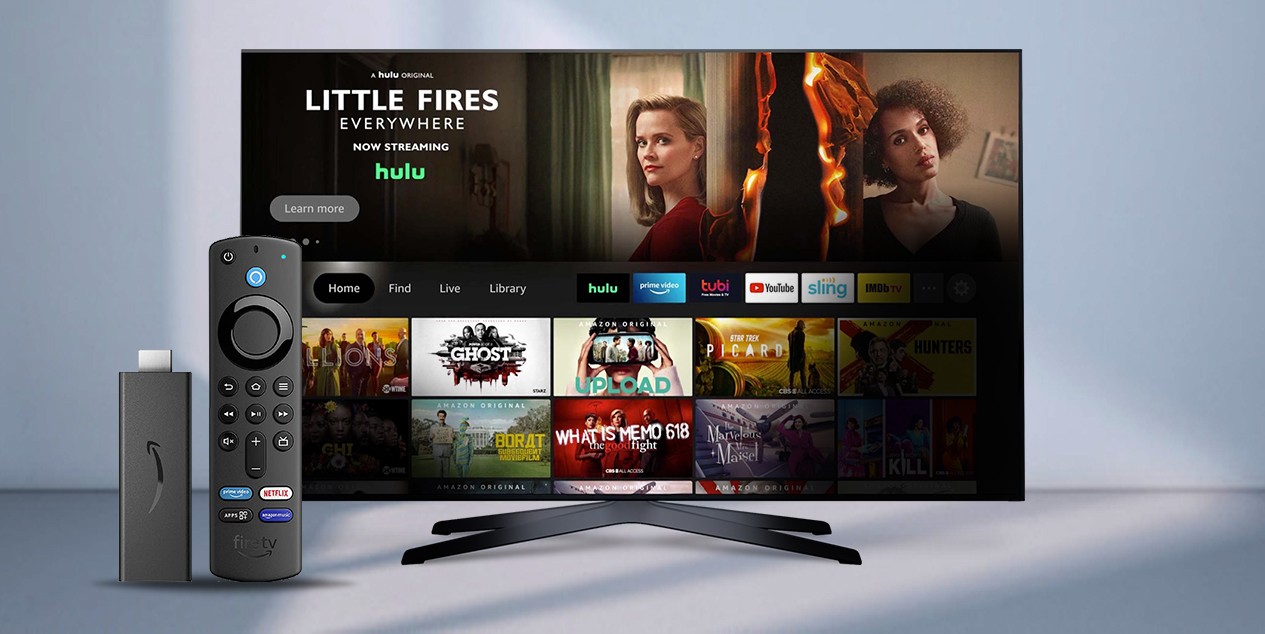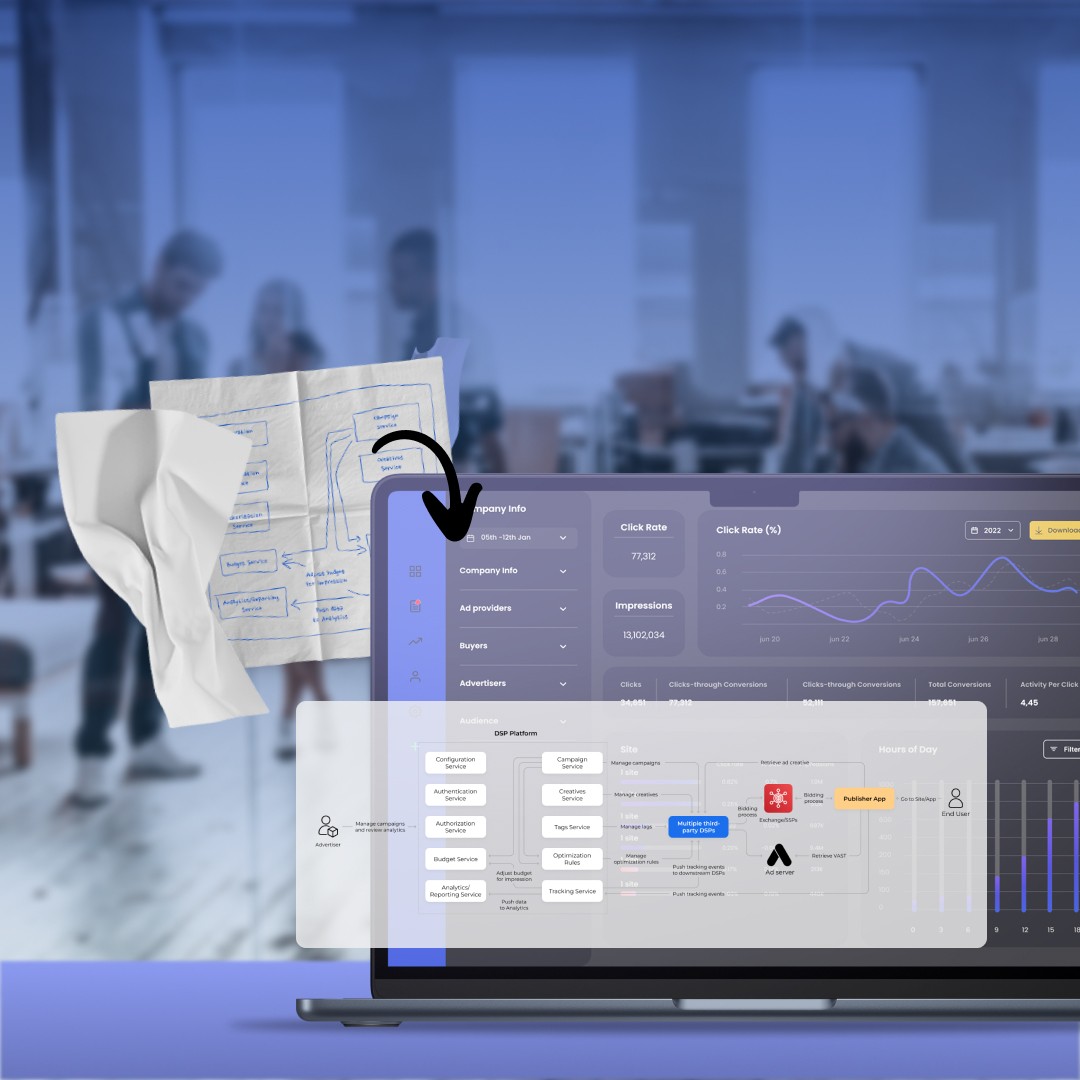Over the last decade, the number of screens that people use has increased dramatically. A TV set that was once a hero of the living room is now competing for attention with laptops, tablets, and smartphones. In the US, households own an average of 11 connected devices, including seven with screens to view content.
It’s clear that this multi-screen behavior is becoming the new norm. And since 90% of our media interactions are screen-based, multi-screen emerges as a winning strategy for those content owners and streaming services that want to stay ahead of the competition while growing their customer base.
Here’s what to consider for multi-screen OTT app development:
Designing with the account to form factor
Every device comes with its own screen size, form factor, operating system, and other characteristics. Couple it with different navigation mechanics like joysticks and remotes, and this device fragmentation can become a real challenge when designing multi-screen apps.

From the usability and brand perspective, it is important that user interface remains consistent across different screens but adapts to the unique features of the device. In addition, viewers can easily mix up their screens, starting to watch content on smartphones when on the go and then switching to a bigger screen at home. Thus, OTT services need to work towards ensuring:
- Consistent experience, i.e. the user experience is comparable across all devices;
- Complementary experience, i.e. devices work together and communicate with one another — think using AirPlay to mirror iPhone screen to AppleTV;
- Continuous experience, i.e. the user experience is fluid across screens which requires content synchronization.
Enabling multi-screen advertising
More screens also equal more advertising opportunities. For example, Reebok as part of their multi-platform approach experienced a 131% lift in brand response conversions after extending its video creative across all digital screens — laptops, mobiles, and tablets — to promote a specific product line.
However, ad management in the new multi-screen ecosystem is not without challenges. To be successful, a multi-screen advertising initiative needs to be well-aligned with the desired target audience and their behavior, gleaned from unified data analytics systems.
How we can help
Looking to expand your audience reach by bringing your online video service to a wider range of platforms and devices? Our multi-screen experts are ready to fast-track your OTT solution to Roku, Tizen, webOS, Android TV, Apple TV, and other platforms of choice.
Supporting reliable content protection
For any OTT service, reliable content protection is an absolute prerequisite. But with so many different devices, the encryption and decryption process of digital rights management (DRM) must be able to negotiate a myriad of different systems and standards.
A multi-DRM solution strikes a balance between providing a convenient, valuable service to consumers and protecting the content. A cloud-based multi-DRM service supports as wide a range of devices and formats as possible, as well as offers integration with DRM solutions such as Widevine or Microsoft PlayReady.
Ensuring seamless quality of experience on every screen
As OTT competition is on the rise, customer expectations are soaring in search of seamless, TV-quality OTT streaming, regardless of the device they choose. Poor quality of experience (QoE) is inexcusable and can ruin a company’s reputation, while making customers to churn and damaging the bottom line.
Top-notch QoE for multi-screen apps is a puzzle in itself as it comprises of many moving parts like sub-second latency, glitch-free playback, robust scalability. In addition to performance aspects, OTT service providers need to take into account such features as interactivity and synchronization across platforms.
Case in point: A highly configurable OTT solution that covers 13 platforms and 25 devices
Oxagile’s multi-year OTT expertise was instrumental in helping the client deliver a multi-screen solution to empower telcos with a streaming service. By leveraging massive code reuse and streamlined business logic, our team managed to significantly reduce time to market and slash development costs.
Embracing different submission processes
To be able to deliver its OTT service on different devices and distribute to a growing customer base, an OTT service provider first needs to publish multi-screen apps on respective stores. And the submission requirements may vary depending on whether it is Android, iOS, tvOS, Fire OS or another platform as each one has a unique approval and publishing process usually described in guidelines and policies, i.e. App Store review guidelines, Google Play guidelines, Amazon Appstore guidelines, webOS guidelines, Samsung Apps TV Seller Office guidelines. Staying on top of multi-screen publishing is important.
The bottom line
The OTT space has become very fragmented as mobiles, smart TVs, tablets, and even game consoles are vying for a user’s attention. And audiences do not just favor one platform to consume content — they use multiple devices at any given time, sometimes even simultaneously.
Keeping up in today’s competitive multi-screen environment requires a comprehensive strategy that would take into account specifics of each platform, including consistent user interface, reliable content protection, and multi-screen advertising opportunities to ensure superior user experiences whatever device viewers prefer.
























